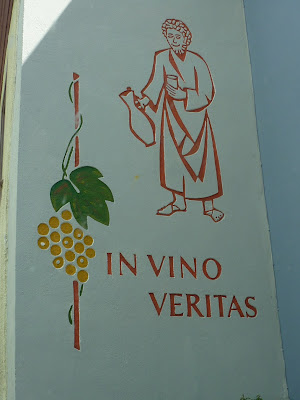Alsace has been a contested place for centuries. The place names say it all:
Musee Unterlinden. There is hardly a more German word than
unterlinden.
Unter den Linden...the great boulevard of Berlin.
Boulevard.... Language is contested ground too, and Europe is a most interesting place to observe it. So much diversity, so much proximity of historically different languages and cultures, so much communication and intermingling as never before. English is the new
lingua franca, I like to say.
The Musee Unterlinden in Colmar is a wonderful little museum, part local history, decorative and fine art, weapons and military matters, music and musical instruments, wine-making, and more. It is one of the more enjoyable "local" museums we have visited.
 |
Giant wine barrels
|
 |
There are many fine paintings, including this,
said to be France's only Cranach, his Lutheran
allegory Melancholie
|
 |
But this museum's surpassing masterpiece is Matthias Grunewald's Isenheim
altarpiece, seen here from above; it takes an entire hall to display its many parts;
Schongauer's pupils, would-be pupils, and admirers included Durer and
Michaelangelo, among others
|
 |
One side panel depicting events in the life of Jesus
|
 |
Crucifixion
|
 |
A model of the massive polyptych
|
 |
Annunciation
|
 |
Sculpture centerpiece
|
 |
Alas, the Hell/nasty creatures panel was getting a cleaning
|
 |
Cute and cuddly 15th century nightmare
|
 |
But there were other things to see; here a glass harmonica, one of only a few
thousand known, invented by one Benjamin Franklin, of Philadelphia, Pennsylvania
|
 |
The Jesus float from the Easter Parade
|

















































